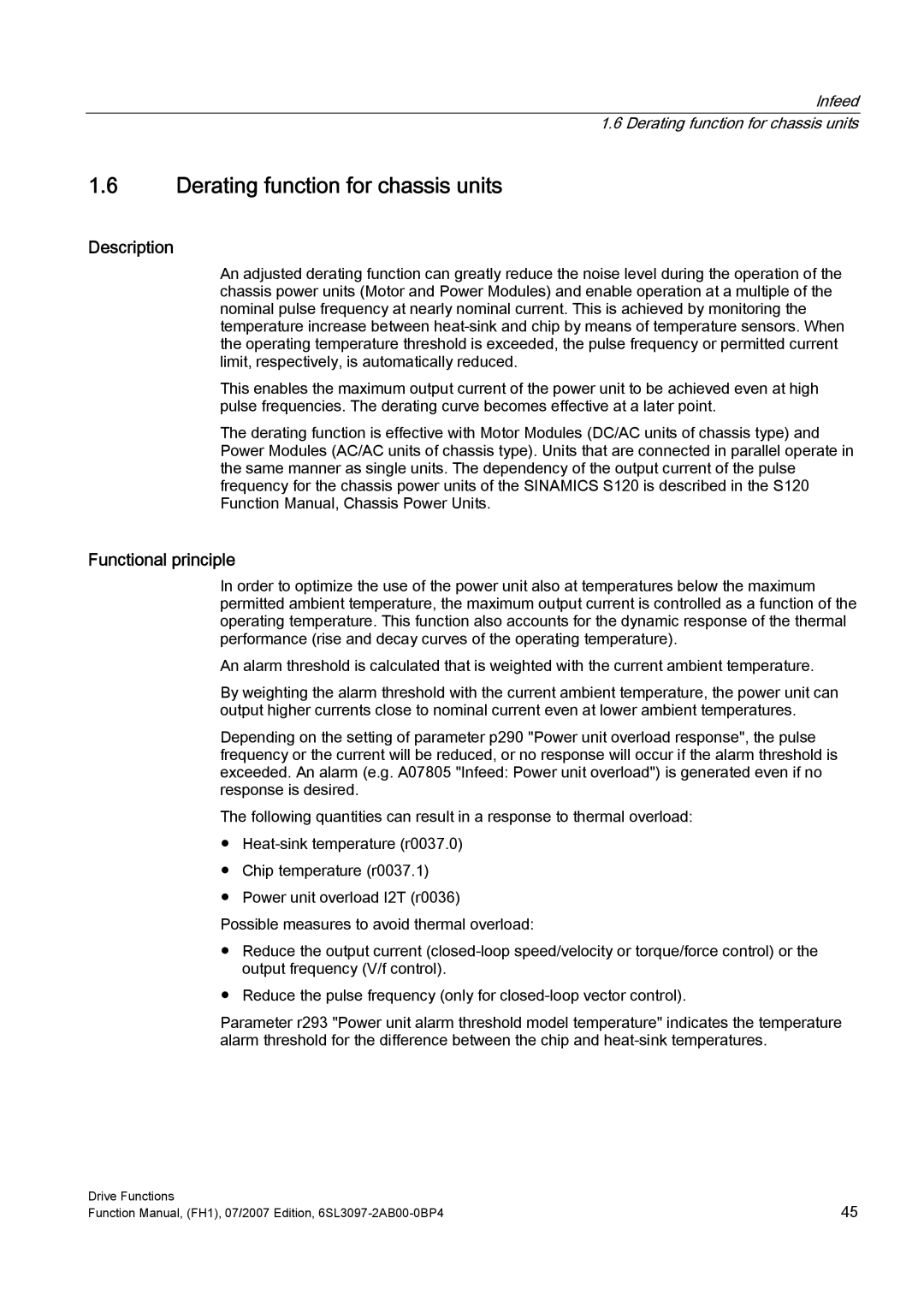Infeed 1.6 Derating function for chassis units
1.6Derating function for chassis units
Description
An adjusted derating function can greatly reduce the noise level during the operation of the chassis power units (Motor and Power Modules) and enable operation at a multiple of the nominal pulse frequency at nearly nominal current. This is achieved by monitoring the temperature increase between
This enables the maximum output current of the power unit to be achieved even at high pulse frequencies. The derating curve becomes effective at a later point.
The derating function is effective with Motor Modules (DC/AC units of chassis type) and Power Modules (AC/AC units of chassis type). Units that are connected in parallel operate in the same manner as single units. The dependency of the output current of the pulse frequency for the chassis power units of the SINAMICS S120 is described in the S120 Function Manual, Chassis Power Units.
Functional principle
In order to optimize the use of the power unit also at temperatures below the maximum permitted ambient temperature, the maximum output current is controlled as a function of the operating temperature. This function also accounts for the dynamic response of the thermal performance (rise and decay curves of the operating temperature).
An alarm threshold is calculated that is weighted with the current ambient temperature.
By weighting the alarm threshold with the current ambient temperature, the power unit can output higher currents close to nominal current even at lower ambient temperatures.
Depending on the setting of parameter p290 "Power unit overload response", the pulse frequency or the current will be reduced, or no response will occur if the alarm threshold is exceeded. An alarm (e.g. A07805 "Infeed: Power unit overload") is generated even if no response is desired.
The following quantities can result in a response to thermal overload:
●
●Chip temperature (r0037.1)
●Power unit overload I2T (r0036)
Possible measures to avoid thermal overload:
●Reduce the output current
●Reduce the pulse frequency (only for
Parameter r293 "Power unit alarm threshold model temperature" indicates the temperature alarm threshold for the difference between the chip and
Drive Functions | 45 |
Function Manual, (FH1), 07/2007 Edition, |
